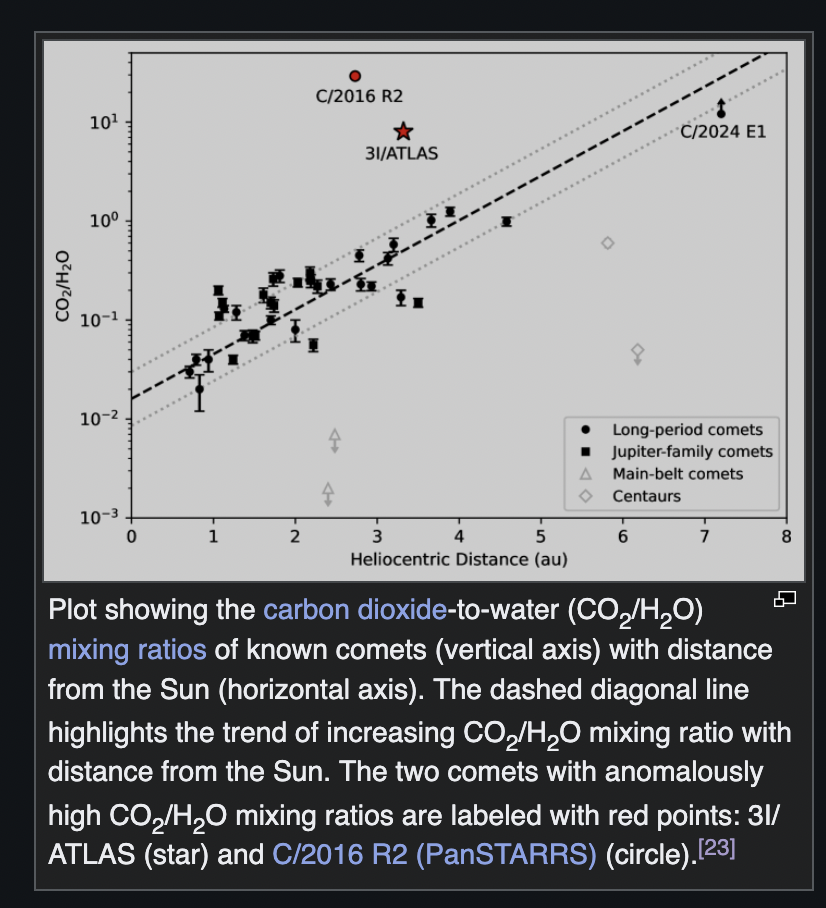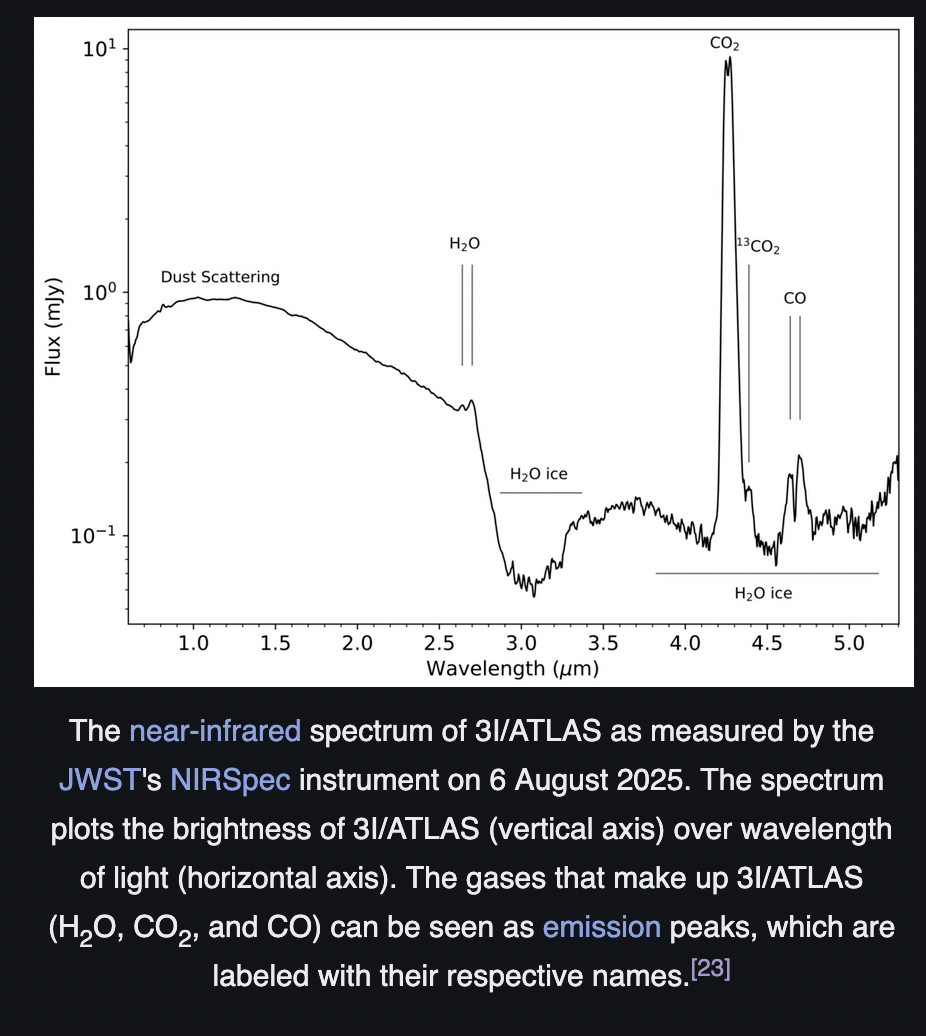Resolves to the single best-fitting option describing the dominant composition of interstellar object currently known as 3I/ATLAS (a.k.a. C/2025 N1 ATLAS) as established from observations during its 2025–26 solar-system passage.
Options (mutually exclusive)
Water-dominated comet (H₂O ≥ 50%)
Peer-reviewed or official instrument-team analyses find robust H₂O (or OH proxy) detection, and the inferred water production rate is ≥ 50% of the combined volatile budget (vs. CO+CO₂) near peak activity (perihelion ±60 days or time of maximum activity).CO/CO₂-dominated comet (CO+CO₂ > H₂O)
CO and/or CO₂ are robustly detected and their combined production rate exceeds water near peak activity (same window as above).Water-only comet (no CO or CO₂ detected)
H₂O/OH is robustly detected, while neither CO nor CO₂ reach peer-reviewed detection significance (≥3σ) through Jan 31, 2026 and credible upper limits keep each <50% of H₂O near peak activity. (Intended to capture a carbon-poor, water-rich case hypothesized by some early teams.)Non-cometary (asteroidal/dormant)
By Jan 31, 2026, no gas species (H₂O/OH, CO, CO₂, CN, C₂, etc.) has a robust, non-retracted detection and the object is characterized as non-volatile / asteroidal by mainstream sources.
Note: This would require later refutation of current OH/H₂O reports.Artificial/technological origin
A credible authority (e.g., NASA/ESA instrument team or peer-reviewed consensus in major journals) explicitly concludes the object is artificial/technological based on direct evidence (e.g., resolved imaging/telemetry). Speculation or op-eds do not qualify.Other or Indeterminate by deadline
If none of the above criteria are satisfied by the resolution deadline (see below).
Resolution sources (in order of precedence)
Wikipedia’s primary article on the object (currently https://en.m.wikipedia.org/wiki/3I/ATLAS)
Peer-reviewed papers in ApJ/PSJ/Science/Nature/A&A that report production rates or unambiguous detections/non-detections.
Official instrument-team releases (HST, JWST, Swift/UVOT, etc.) and NASA/ESA pages summarizing composition.

